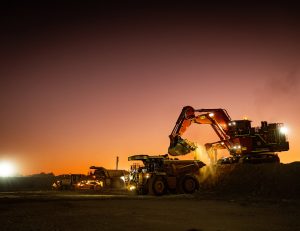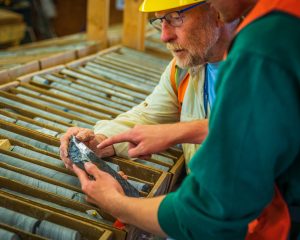As the temperature soared to 38C in Perth on Friday and those lucky enough to not be stuck behind a desk flocked to the beach, thoughts of a global sand shortage would have been far from most people’s minds.
More likely, some would have turned to Socrates’ musings that like the sands of the hourglass, so are the days of our lives.
Back in the modern world, a shortage of quality sands – the world’s second most-consumed resource behind water – is attracting more and more attention.
And the worldwide rush to get the COVID-19 immunisation out as quickly as possible is merely turning more focus on the key ingredient used to make the glass vials containing the vaccines.
Glass is made from the silica found in sand, which is melted down and mixed with traces of other materials.
The COVID-19 inspired vaccines boom is not – yet – driving the glass-quality silica sands shortage. But it has helped to turn attention to where the next long-term supplies of this key building material will come from.
Construction booms flourishing in Asia are straining an already tight supply, demand for solar panels is skyrocketing as economies go green and savvy investors are fast realising that silica sand is where the smart money lies.
VRX Silica (ASX: VRX) is the only ASX-listed silica sand company in Australia and has been quietly working away at advancing its three high-quality projects north of Perth.
This week, VRX submitted its referral to Western Australia’s Environmental Protection Authority (EPA) for approval for Arrowsmith North, the most advanced of its three projects. It is a key step in Arrowsmith North’s development.
In other news:
-
Hawke’s Point joins Rox to progress Youanmi gold project towards development
-
Seasoned oil and gas explorer and producer Buru Energy releases its 2020 Annual Report
-
Exciting gold exploration stock BMG Resources releases half-year report
-
Copper and gold producer Aeris Resources further slashes its debt load
-
Canaccord Genuity initiates coverage of Australian Potash with speculative buy and 30c rice target
-
Hastings drill results at Auer deposit further extend rare earths footprint at world-class Yangibana
Silica sand extraction is different to hard-rock mining and more akin – though less invasive – than mineral sands mining.
VRX’s strong emphasis on sustainability has led the Perth company to develop its advanced Vegetation Direct Transfer (VDT) method.
VDT uses a made-for-purpose front-end loader bucket to remove a 40cm deep sod containing the vast majority of topsoil, native flora and invertebrate fauna, which sit above the silica sand zones. This method transports the vegetation and topsoil to a rehabilitation zone for immediate rehabilitation.
VRX’s referral, which incorporates pre-referral feedback received from the EPA last December, states that Arrowsmith North can be developed without significant impact on the environment. VRX will not use chemicals and produce no dust while processing the mined silica sand.
The Arrowsmith North project includes a 248Mt indicated resource, in addition to an Inferred Mineral Resource of 523Mt and, together with the Arrowsmith Central project, covers an area of 3,600 hectares – sufficient to sustain high-purity silica sand mining for more than 100 years.
A 2019 bankable definitive feasibility study suggested a $28.3 million capital cost to develop Arrowsmith North, $25.9 million for Arrowsmith Central and $32.8 million for Muchea. Combined, the three projects delivered a net present value of about $600 million.
“(The EPA referral) is a significant milestone for the development of Arrowsmith North and our goal to become a leading supplier of high-quality silica sand to the global market,” VRX managing director Bruce Maluish said.
“VRX has developed a unique and progressive mining and rehabilitation method specifically for Arrowsmith North and our other silica sand projects to minimise the environmental impact of our activities.
“Thorough planning will allow us to deliver our silica sand projects sustainably and efficiently, with a very low carbon footprint.”
VRX shares jumped to 32.5c on the EPA referral news before ending the week at 30c to give the company a $164 million market capitalisation.



